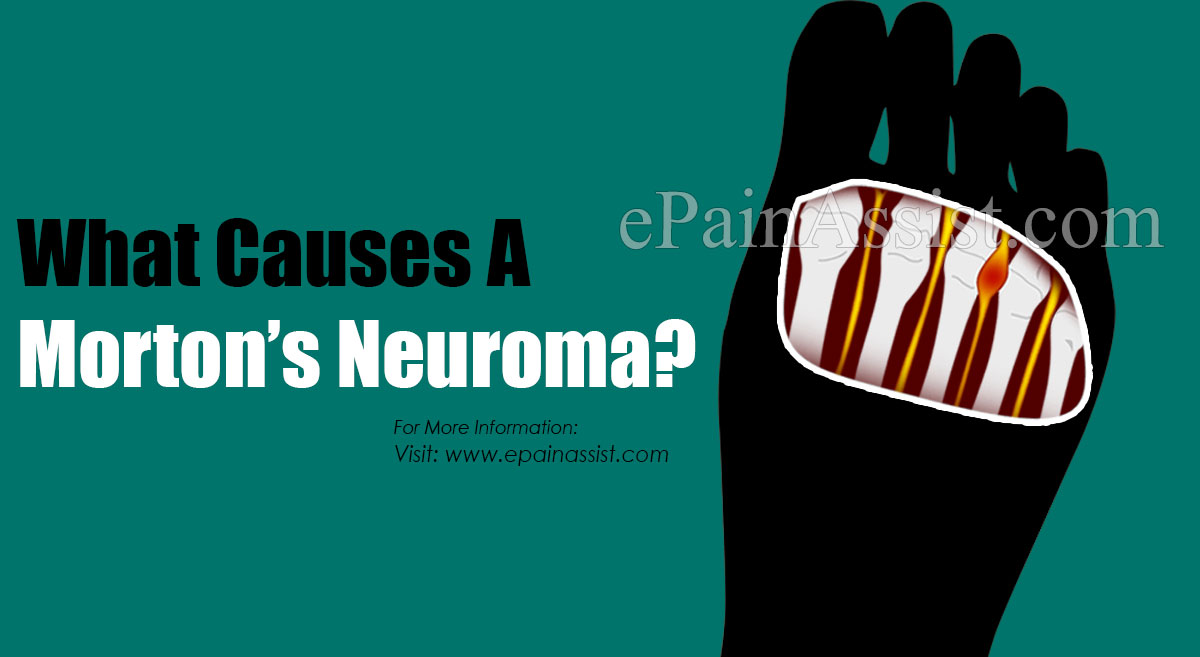You may walk along and often feeling a burning type of pain nearby the ball area of your foot as similar to walking on a small pebble or marble in your shoe. In case the pain or burning sensation stays for a longtime, you experience a condition referred as morton’s neuroma.

What Causes A Morton’s Neuroma?
Until now, none of the podiatrists or general doctors has come to know the exact reason behind the problem of Morton’s Neuroma. However, a majority of health experts predicted that it takes place due to excessive mash, injury or stretch of the nerve toe. Accordingly-
Thickness Of The Inner Tissue Surrounding The Nerve. Morton’s Neuroma mainly takes place whenever the tissue in your foot near the nerve leading towards the toe becomes thick. Pressure thus created against the affected nerve irritates the ball area and causes burning type of pain. The pain often crops up between two toes.
Factors To Contribute The Problem Of Morton’s Neuroma
Considering the aforementioned case, we can say that following factors contribute towards the problem of Morton’s Neuroma.
Abnormal Conditions Of Your Feet. Individuals with flat feet, misshapen toes or hammertoes, overly high arches and other related abnormal conditions are prone to suffer from Morton’s Neuroma.
Tight Or Unfit Shoes With High Heels. High heels put pressure on the ball area and toes of your feet. Even tight or unfit shoes may even cause such problems in the near future.
Involvement In High-Impact Sports/Activities. Tennis, badminton, running and other high-impact activities cause huge stress on your feet, which results in burning area in the toes or ball area. Besides this, individuals involved rock climbing and snow skiing activities are more likely to suffer from Morton’s Neuroma, as they have to wear tight shoes and in turn, experience excessive pressure on the toes.
Overweight Condition. Along with unfit or tight footwear, nerve irritation and hammertoes problems, you may experience Morton’s Neuroma in the later phases of your life if you have overweight condition.
Symptoms Of Morton’s Neuroma
Morton’s Neuroma problem does not contain any visible sign, like for instance a lump or a lesion. Thus, you have to identify your problem based on what exactly you feel. Accordingly-
- Firstly, you experience a tingling between your second and third or third and fourth toes.
- With consistent physical activity, the feeling or sensation of your tingling becomes strong.
- You even feel shooting pain across the ball area of your foot or at its base region.
- Your foot will feel as you are standing on a pebble or there is a small stone present in your sock or shoe.
- You may feel burning sensation or numbness in your toes.
- Your discomfort feeling becomes worse while you walk or wear tight/unfit/high heel shoes, as such footwear collections squeeze the feet.
- Your pain associated with Morton’s Neuroma eases off during the nighttime.
Conclusion
To conclude, we should say that Morton’s neuroma is usually caused because of thickening of the tissue present across the metatarsal nerves i.e. nerves connecting toe bones. However, the factors responsible to cause the problem may be anything, like unfit shoes, involvement in impact sports and obesity.
- Mayo Clinic. (2021). Morton’s Neuroma https://www.mayoclinic.org/diseases-conditions/mortons-neuroma/symptoms-causes/syc-20351935
Also Read:
- Are Birkenstocks Good For Morton’s Neuroma?
- Is Surgery For Morton’s Neuroma Successful?
- What Helps Morton’s Neuroma Pain?
- 6 Best Shoes for Morton’s Neuroma : Comfortable Footwear for Pain Relief
- Benefits Of Foot Massage For Morton’s Neuroma
- Can Morton’s Neuroma Cause Leg Pain?
- How Do You Treat Morton’s Neuroma At Home?
